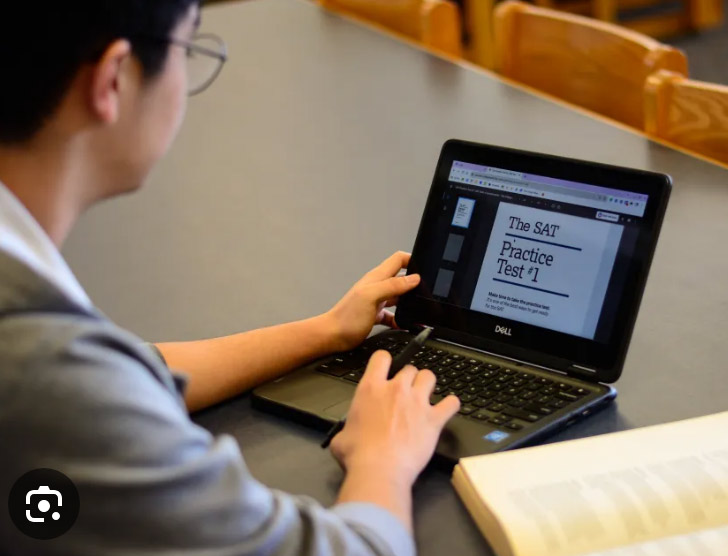Talk to an Expert Today
Understanding the Digital SAT

With more colleges moving back to requiring a standardized college exam, the SAT is back in focus as part of the college prep experience for many students. The College Board, the developer and owner of the SAT, has continued to advance their methods with a recent change being the new digital SAT – moving from a traditional paper-based format to a digital, adaptive version.
This change aims to modernize the testing experience and better align with new practices while making the experience more streamlined. The new test started with International students last year with March 2024 being the switch-over point for US students.
Having worked with many students in their test preparation, here are some of the highlights:
Test Format and Delivery
The prior SAT was administered on paper and taken with a pencil just like many parents remember. Students would fill in bubbles for their answers on a physical answer sheet.
The new digital SAT is entirely computer-based. Students take the test on a laptop or tablet, and can have one provided by the testing center if they don’t have one. Students also must install the testing app from the College Board, called Bluebook, to be ready for their test.
Test Structure
The prior paper-based test consisted of four main sections: Reading, Writing and Language, Math (with calculator), and Math (without calculator). Each section had a fixed number of questions and timing.
The digital SAT test is adaptive with two main sections: Reading & Writing and Math. The adaptive functionality means based on student performance on the first module for a section, they are placed into a different module for the second section. Practically speaking, if a student scores well in the first math module, they are placed into a more difficult math section for their second. Scores of course are correspondingly weighted – if students do not test into the second harder module, they will have a limit on their final score.
The new SAT covers similar material to the prior test content for both sections with a few modifications. One example is that reading passages are shorter than before, better fitting the experience of screen reading.
Some good news is that the new digital SAT is shorter, taking a little over 2 hours compared to over 3 hours for the prior exam. We do hear positive feedback from students on the new length.
The new test uses the same range with a high score of 1600 being possible. There is no optional essay section on the new test.
Preparation and Practice
In general, we advise following the general education principles of exposing students to practice and content that will be similar to test conditions and ensure mastery of the material with ample practice, use proven review techniques like interleaving, and spacing out practice and study over a few months. More general test prep advice can be found on our blog.
At Lemonade, we provide digital practice tests and question banks that are similar in format to the digital SAT. We use the results of the assessment to match students’ learning needs with appropriate instruction from a teacher. Targeted, effective instruction and imparting clear testing strategies is our goal.
We also recommend students download Bluebook from College Board so they can be familiar with the app, see what the actual test looks like, and gain practice with Desmos, the built-in calculator they can use during the test. The less surprises the better on test day!
Early feedback
As an academic and test prep tutoring company, we have not heard substantial pushback on the new format. However, anecdotally, a number of students say the math section is “hard.” Because the test is time condensed and adaptive, our quick guess is that the harder questions in the second module are perceived as very difficult as the adaptive part of the test kicks in.
This new format aims to provide a more efficient and student-friendly assessment. That being said, the rollout is still pretty new so we expect adjustments to be made over time.
Understanding these differences can help students and parents better prepare for the testing experience and ensure appropriate preparation.
For further information and materials, we recommend visiting the official College Board website and explore the high quality digital SAT resources they offer.
For more information about Lemonade’s offerings, please visit us at www.lemonadeeducation.com
Note: The SAT, Digital SAT, and Bluebook are all trademarks and property of the College Board.
